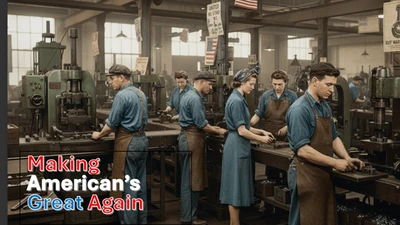A Cautiously Optimistic Perspective
As an investor with a keen eye on global markets, the U.S.-EU trade deal finalized on July 27, 2025, has piqued my interest. The agreement, which sets a 15% tariff on most EU goods entering the U.S. and includes EU commitments to purchase $750 billion in U.S. energy and invest $600 billion in the U.S. by 2028, has sparked optimism across European markets. However, as I consider whether now is the right time to invest in the EU, I approach the opportunity with cautious optimism—excited by the potential but mindful of the risks.
Why I’m Optimistic
The trade deal has significantly reduced uncertainty, a critical factor for any investor. By avoiding a threatened 30% tariff and securing a manageable 15% rate on most EU goods, the agreement provides stability for European businesses tied to the nearly $1 trillion U.S. market. This clarity benefits sectors like automotive, where tariffs dropped from 27.5% to 15%, boosting the competitiveness of companies like Volkswagen and BMW. Similarly, zero tariffs on aircraft, certain chemicals, and select agricultural products create favorable conditions for firms like Airbus and chemical exporters.
The market’s initial response reinforces this optimism. European indices like the EUROSTOXX 50 and DAX futures jumped over 0.9% on the news, reflecting relief from the prospect of a trade war. For an investor like me, this suggests short-term upside potential in EU markets, particularly in tariff-favored sectors. The EU’s $750 billion energy purchase commitment, aimed at replacing Russian gas, also strengthens energy security, potentially benefiting utilities and related industries—a compelling case for diversified investments.
Cautious? Some…
Despite the positive momentum, I’m tempering my enthusiasm with caution. Critics, including French officials, have called the deal “asymmetric,” noting it favors U.S. interests. The EU faces higher tariffs than the pre-Trump average of 4.8%, and the $600 billion investment and $750 billion energy pledges hinge on private companies, not public funds. This reliance raises doubts about enforceability, as private firms may not align with political commitments, potentially undermining market confidence over time.
Certain sectors also warrant concern. Pharmaceuticals face potential 15% tariffs pending U.S. investigations, posing risks to exporters like Novo Nordisk. The 50% tariffs on steel and aluminum continue to burden EU producers, and the auto industry could see up to 70,000 job losses if production shifts to the U.S. to avoid tariffs. Broader challenges, such as the Ukraine war and ECB monetary policy, may further pressure EU growth, with estimated GDP declines of 0.2–0.8% in key countries like Germany and Ireland.
Political divisions within the EU add another layer of uncertainty. France’s critique of the deal as a “capitulation” and ongoing negotiations over steel, wine, and spirits signal potential friction. As an investor, I’m cautious about how these tensions could impact market stability, particularly if the deal’s implementation falters.
How I View EU Investment
With this backdrop, I’m adopting a balanced strategy for EU investments. In the short term, I see potential in tactical plays, such as European ETFs like VGK (Vanguard FTSE Europe) or EZU (iShares MSCI Eurozone), which could capture the market’s relief rally. Sectors like automotive (e.g., Stellantis) and aerospace (e.g., Airbus) are particularly attractive due to their tariff advantages. However, I’m closely monitoring U.S. investigations into pharmaceuticals and semiconductors, as new tariffs could disrupt these industries.
For the long term, I remain prudent. The deal’s asymmetric nature and reliance on private sector commitments suggest that risks could outweigh rewards if execution stumbles. To mitigate this, I plan to diversify EU exposure with investments in other regions, such as the U.K., which secured a 10% tariff deal. I’ll also track corporate earnings and U.S. economic indicators, like the upcoming July jobs report, to gauge demand for EU goods.
Final Thoughts
The U.S.-EU trade deal has opened a promising window for investing in the EU, and I’m cautiously optimistic about the opportunities. The reduced risk of a trade war and benefits for sectors like automotive and aerospace make the EU an appealing destination for short-term investments. However, the deal’s asymmetry, uncertain commitments, and sectoral risks remind me to proceed with care. As I navigate this landscape, I’ll focus on thorough evaluation, strategic diversification, and a commitment to seizing impactful opportunities. For now, I’m keeping my portfolio balanced, my optimism tempered, and my eyes on the horizon.
If you’re considering EU investments, I encourage you to consult a financial advisor to align your strategy with your goals. Let’s approach this opportunity with caution, but also with support for the extraordinary deal.










